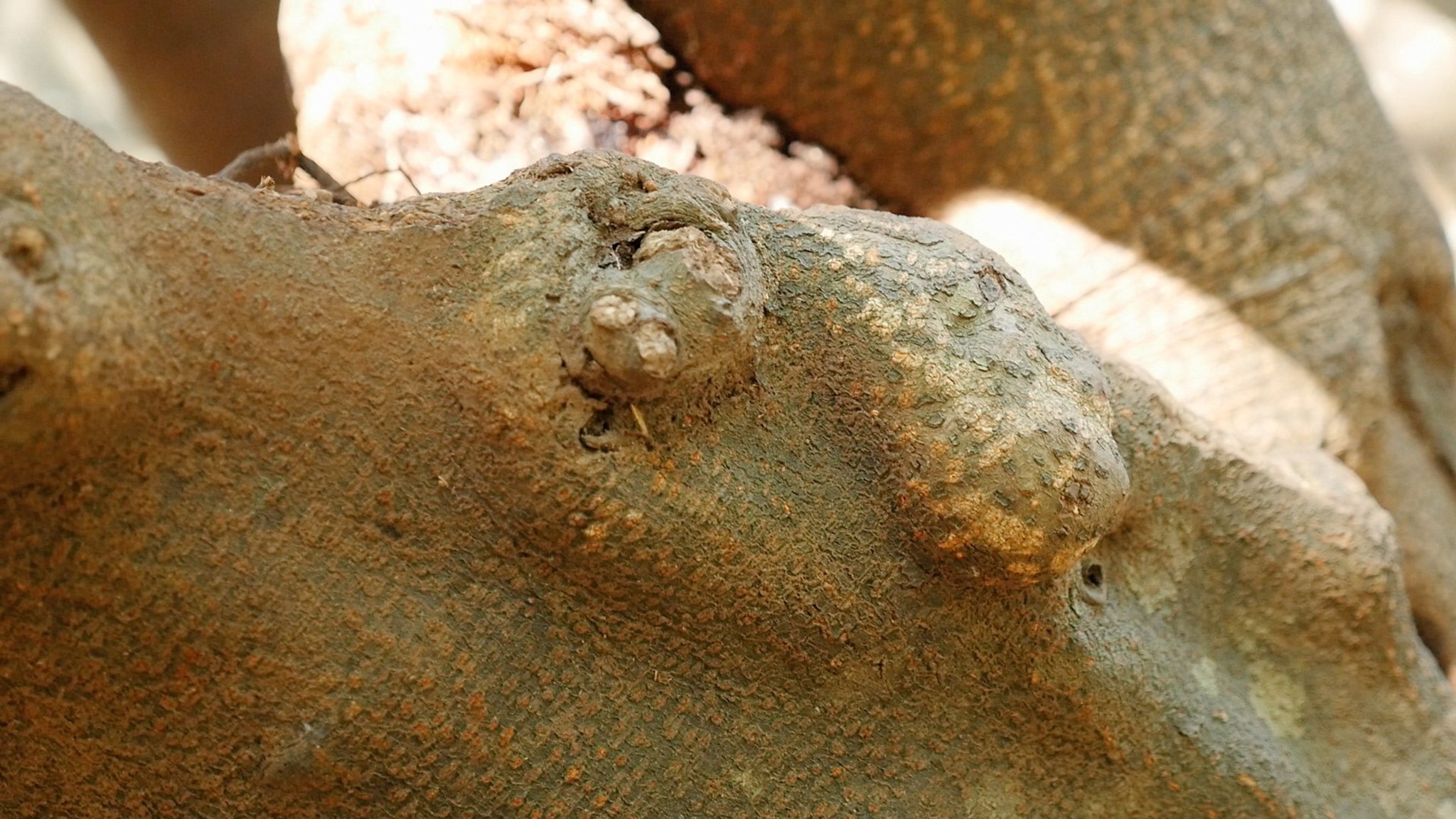
The remnant
single channel HD video, colour, stereo sound
19.45 min
2016
A hedge of indigenous Wild Almond trees was planted in 1659 by Jan van Riebeeck, VOC employee and the Dutch Commander of the Cape, South Africa from 1652 to 1662. Together with a 16 km construction of wooden fence and watchtowers it formed the 25 km long eastern boundary of the Dutch colonial settlement that ran from the mouth of the Salt River through Rondebosch to Kirstenbosch in what is now Cape Town. As the historical narrative goes, it served as a defensive barrier that was to prevent the original inhabitants, the Khoikhoi and San tribes, from raiding the colonist's cattle. To this day its surviving remnants grow in Kirstenbosch botanical garden.
In The Remnant the stories of two men, one a botanist and the other a tour guide, are interwoven with fragments from Van Riebeeck's diary (Daghregister, 1652-1662) read aloud by Judith Westerveld voicing the intentions of the Dutch coloniser and the resistance of the Khoikhoi and San people. The botanist, Adam Harrower, recounts the cycles of growth and deterioration of the Wild Almond tree, bringing the natural form of Van Riebeeck's Hedge to life. The tour guide, Andrew Jacobs, questions the official historical narrative that surrounds Van Riebeeck's Hedge, as well as recounting the influence that the segregation laws of apartheid had on his personal life and on the lives of the people in his community. The interchange between the different voices, as well as the aesthetic visualisation of the remnants of the hedge, allows for its botanical form to function as a double metaphor in the film. Its growth emphasises the rise of segregation, and its deterioration the suffering that this caused.
SCREENINGS
Tromsø International Film Festival (2019); Floraphilia. Plants as archives, Academy of the Arts of the World, Cologne (2019); BIEFF, Bucharest International Experimental Film Festival, (2018); LIMA presents New Works, Amsterdam (2017); Southern Summer School, BAK, Utrecht (2017); Encounters South African International Documentary Festival, Johannesburg & Cape Town (2017); Short Highlights Program IFFR, EYE Film Museum Amsterdam; GroningerForum, Natlab Eindhoven, Chassé Cinema Breda, Cinema Middelburg (2017); 46th IFFR, International Film Festival Rotterdam (2017); A Global Table, De Hallen/Frans Hals Museum, Haarlem (2017); Re(as)sisting Narratives, District Six Museum, Cape Town (2016); Re(as)sisting Narratives, Framer Framed, Amsterdam (2016).







CREDITS
Director: Judith Westerveld
Cinematography: Judith Westerveld
Sound design: Tessa Joosse
Colour correction: Ivo van Stiphout
Production assistance: Tijs de Bie
Featuring: Andrew Jacobs, Adam Harrower and Bongani Vellem
Sources: Daghregister, Jan Anthonisz van Riebeeck, 1659-1662
Daily record of the Cape of Good Hope colony of the Dutch East India Company (VOC)
Dutch Transcript Daghregister Volume 1, 2, 3 , The Van Riebeeck Society, A.A Balkema, Cape Town, 1957
English Translation Daghregister Volume 1, 2, 3, The Van Riebeeck Society, A.A Balkema, Cape Town & Amsterdam, 1954
All sources Western Cape Archives and Records Service, Cape Town, South Africa
Thanks to Kirstenbosch Botanical Garden, Alice Notten, The Western Cape Archives and Records Service
Realized with the support of Framer Framed www.framerframed.nl